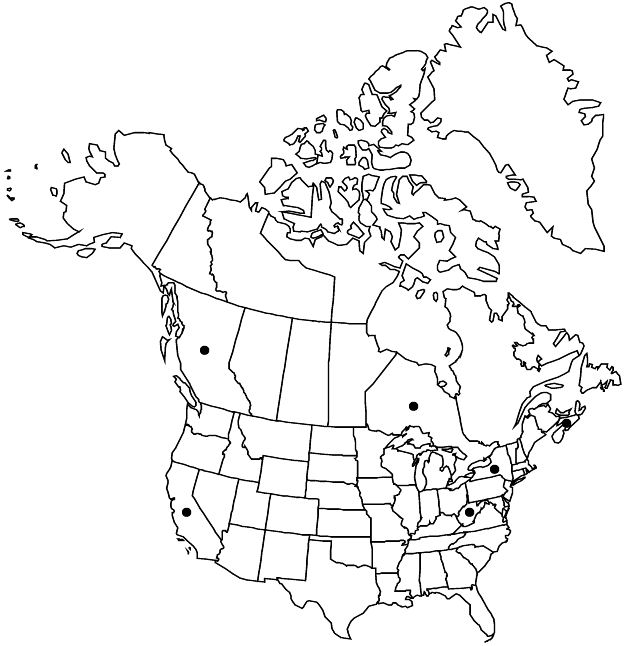Difference between revisions of "Euphorbia exigua"
Sp. Pl. 1: 456. 1753.
FNA>Volume Importer |
imported>Volume Importer |
||
| (6 intermediate revisions by 2 users not shown) | |||
| Line 16: | Line 16: | ||
|name=Tithymalus exiguus | |name=Tithymalus exiguus | ||
|authority=(Linnaeus) Hill | |authority=(Linnaeus) Hill | ||
| + | |rank=species | ||
}} | }} | ||
|hierarchy=Euphorbiaceae;Euphorbia;Euphorbia subg. Esula;Euphorbia exigua | |hierarchy=Euphorbiaceae;Euphorbia;Euphorbia subg. Esula;Euphorbia exigua | ||
| Line 31: | Line 32: | ||
|elevation=0–1500 m. | |elevation=0–1500 m. | ||
|distribution=B.C.;N.S.;Ont.;Calif.;N.Y.;W.Va.;Europe;w Asia;n Africa;Atlantic Islands (Macaronesia). | |distribution=B.C.;N.S.;Ont.;Calif.;N.Y.;W.Va.;Europe;w Asia;n Africa;Atlantic Islands (Macaronesia). | ||
| − | |discussion=<p>Euphorbia exigua can be easily distinguished from other annual species of the genus in the flora area by its tuberculate seeds.</p> | + | |introduced=true |
| + | |discussion=<p><i>Euphorbia exigua</i> can be easily distinguished from other annual species of the genus in the flora area by its tuberculate seeds.</p> | ||
|tables= | |tables= | ||
|references= | |references= | ||
| Line 40: | Line 42: | ||
-->{{#Taxon: | -->{{#Taxon: | ||
name=Euphorbia exigua | name=Euphorbia exigua | ||
| − | |||
|authority=Linnaeus | |authority=Linnaeus | ||
|rank=species | |rank=species | ||
| Line 56: | Line 57: | ||
|publication year=1753 | |publication year=1753 | ||
|special status=Introduced | |special status=Introduced | ||
| − | |source xml=https:// | + | |source xml=https://bitbucket.org/aafc-mbb/fna-data-curation/src/2e0870ddd59836b60bcf96646a41e87ea5a5943a/coarse_grained_fna_xml/V12/V12_555.xml |
|genus=Euphorbia | |genus=Euphorbia | ||
|subgenus=Euphorbia subg. Esula | |subgenus=Euphorbia subg. Esula | ||
Latest revision as of 19:16, 5 November 2020
Herbs, annual, with taproot. Stems erect, unbranched or branched, 3–30 cm, glabrous. Leaves: petiole 0–0.5 mm; blade linear, linear-oblong, or linear-spatulate, 2–30 × 1–5 mm, base cuneate or truncate, margins entire, apex acute, obtuse, or emarginate, surfaces glabrous; venation inconspicuous, only midvein prominent. Cyathial arrangement: terminal pleiochasial branches 3–5, each 1–3 times 2-branched; pleiochasial bracts similar in shape and size to or sometimes slightly longer and wider than distal leaves; dichasial bracts distinct, linear, or linear-lanceolate, or lanceolate-ovate, base rounded to subcordate, margins entire, apex acute; axillary cymose branches 0–5. Cyathia: peduncle 0–2 mm. Involucre cupulate, 0.3–0.5 × 0.6–0.8 mm, glabrous; glands 4, elliptic to crescent-shaped, 0.2–0.4 × 0.3–0.6 mm; horns divergent, 0.2–0.5 mm. Staminate flowers 5–8. Pistillate flowers: ovary glabrous; styles 0.5–0.7 mm, 2-fid. Capsules subglobose, 1–1.8 × 1.3–2 mm, slightly lobed; cocci rounded, smooth, puncticulate toward abaxial line, glabrous; columella 1.1–1.4 mm. Seeds blackish to grayish, 4-angled-ovoid, 1–1.5 × 0.5–0.7 mm, white, tuberculate; caruncle conic or subconic, 0.1–0.3 × 0.1–0.3 mm.
Phenology: Flowering and fruiting summer–fall.
Habitat: Edges of gardens, roadsides, waste places.
Elevation: 0–1500 m.
Distribution

Introduced; B.C., N.S., Ont., Calif., N.Y., W.Va., Europe, w Asia, n Africa, Atlantic Islands (Macaronesia).
Discussion
Euphorbia exigua can be easily distinguished from other annual species of the genus in the flora area by its tuberculate seeds.
Selected References
None.